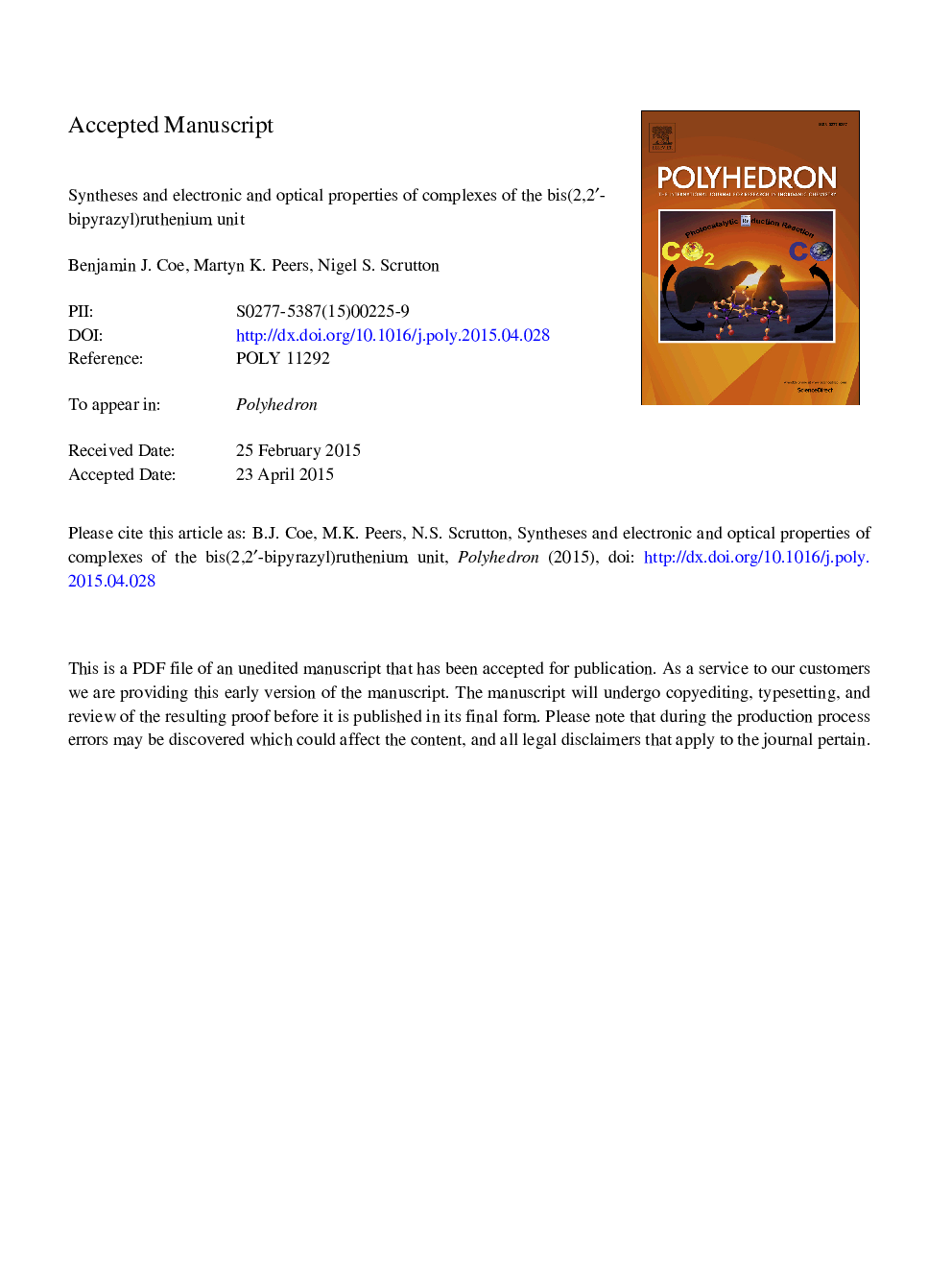| Article ID | Journal | Published Year | Pages | File Type |
|---|---|---|---|---|
| 7765219 | Polyhedron | 2015 | 29 Pages |
Abstract
Seven new complexes of the form cis-[RuII(bpz)2(L-L)]n+ (bpz = 2,2â²-bipyrazyl: n = 2; L-L = 4,4â²-bis(tert-butyl)-2,2â²-bipyridyl, 4,4â²-diphenyl-2,2â²-bipyridyl, 4,4â²-dichloro-2,2â²-bipyridyl, 4,4â²-diamino-2,2â²-bipyridyl, 4,4â²-bis(trifluoromethyl)-2,2â²-bipyridyl, 4,4â²-bis(methoxycarbonyl)-2,2â²-bipyridyl: n = 4; L-L = Nâ³,Nâ²â³-dimethyl-4,4â²:2â²,2â³:4â³,4â²â³-quaterpyridinium) are prepared and isolated as their PF6â and Clâ salts. Improved methods for synthesising bpz and 4,4â²-bis(trifluoromethyl)-2,2â²-bipyridyl are described also. Characterisation involves various techniques including 1H NMR spectroscopy and mass spectrometry. The new compounds are studied alongside the known species where n = 2 and L-L = 2,2â²-bipyridyl, 4,4â²-dimethyl-2,2â²-bipyridyl or 2,2â²-bipyrimidine. Their UV-Vis spectra display intense intraligand Ï â Ïâ absorptions, and also metal-to-ligand charge-transfer (MLCT) bands with two resolved maxima in the visible region. Red-shifts in the MLCT bands occur as the electron-donating strength of L-L increases. Cyclic voltammograms show reversible RuIII/II oxidation waves, and several ligand-based reductions that are also mostly reversible. The variations in the redox potentials correlate with changes in the MLCT energies. Time-dependent density functional theory calculations give relatively good correlations with the experimental UV-Vis spectra for selected complexes when using the M06 functional and basis sets Def2-QZVP (on Ru) and Def2-SVP (on all other atoms) in acetonitrile. The lowest energy visible absorption band is confirmed to be due to RuII â bpz MLCT, while further such transitions occur along with MLCT to L-L at higher energies.
Related Topics
Physical Sciences and Engineering
Chemistry
Inorganic Chemistry
Authors
Benjamin J. Coe, Martyn K. Peers, Nigel S. Scrutton,
